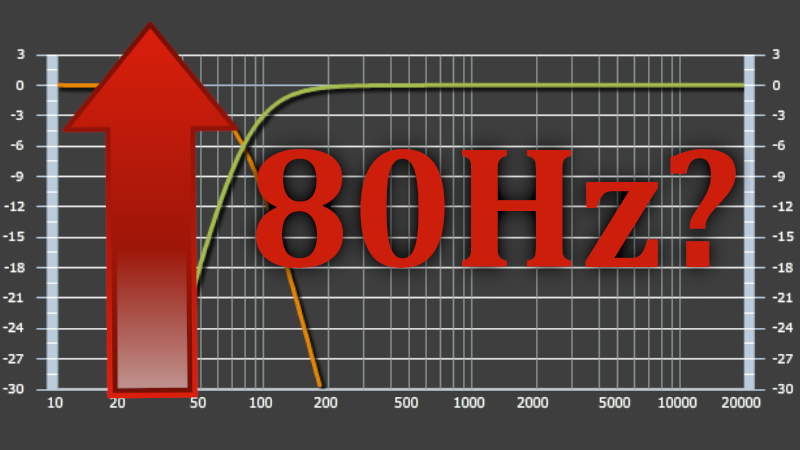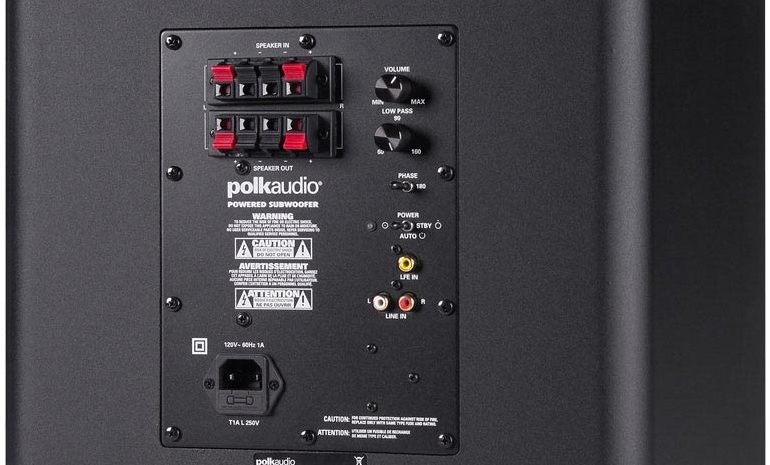Do My Surround Speakers Need to Play Down to 80Hz?
If you read just about any guide about speakers and crossovers (including ours), you invariably come across the 80Hz crossover point. This is a rule of thumb as a starting point for your speakers. Many would say that 80Hz is the highest you should ever set your crossover. But you’ve looked at your surround speakers’ specs and they don’t play all the way down to 80Hz. They start dropping off far north of that! Do you need to upgrade your surround speakers to models that can play down to 80Hz? Let’s discuss!
Why 80Hz?
There are a lot of reasons why 80Hz is the de facto standard for your crossover. Long ago (so long I can’t find a link to share with you) it was determined that people can’t generally localize the source of a sound that is 80Hz or lower. That may not always be true in every situation, but, all things being equal, it is true enough. Thus, 80Hz became the recommendation for where you crossover your speakers (fronts, surrounds, center, etc.) into your subwoofer.

As time passed and no one really challenged that advice, manufacturers of speakers took it to heart. Now, any bookshelf speaker worth its salt can play at least down to 80Hz. On the other side, subwoofers of any quality can play cleanly up to 80Hz and maybe a little higher. But because most manufacturers know that people are going to set their crossover to 80Hz, they don’t much care how much lower (for speakers) or higher (for subwoofers) their products play. Why should they? They are going to get crossed over anyhow.
This means that many speakers that might be able to play lower don’t and subwoofers that might be able to play higher show non-linearities at those frequencies.

When User Wants and Physics Meet
Enter the surround speaker. The thing about people is that they don’t much care about physics. They think that a speaker should be able to be super small and also play all of the sounds. That’s simply not the case. To get bass out of a speaker, you either need a lot of EQ and amplifier power or (more commonly) a larger cabinet. With the former, the speaker ends up costing a lot. With the latter, you can keep the costs down but the speaker is bigger.
Users often want an inexpensive speaker that can play low and is also small. You can have two of those.
Upping the Crossover
Invariably people end up with small, inexpensive speakers for surround duties that can’t play down to 80Hz. Now they have to decide if they raise the crossover to meet the abilities of their speakers or just stick with the “best practice” of setting all your speakers’ crossovers at 80Hz.
We Give You Permission
Our crossover recommendations state that you should start with your auto-setup program. After, manually check the crossover settings. Any crossover set lower than 80Hz should be raised to 80Hz. Any set higher than 80Hz (common for surround speakers) should be left alone. We stick by that recommendation. The fact is that there is exceedingly little very low bass (which is bass below 200Hz) sent to your surround speakers. Even if there is some, there is usually so much else going on in the audio that localizing your subwoofer is rarely, if ever, an issue. If your surround speakers can’t play below 80Hz, you are safe to raise the crossover to their -3dB point or higher.


